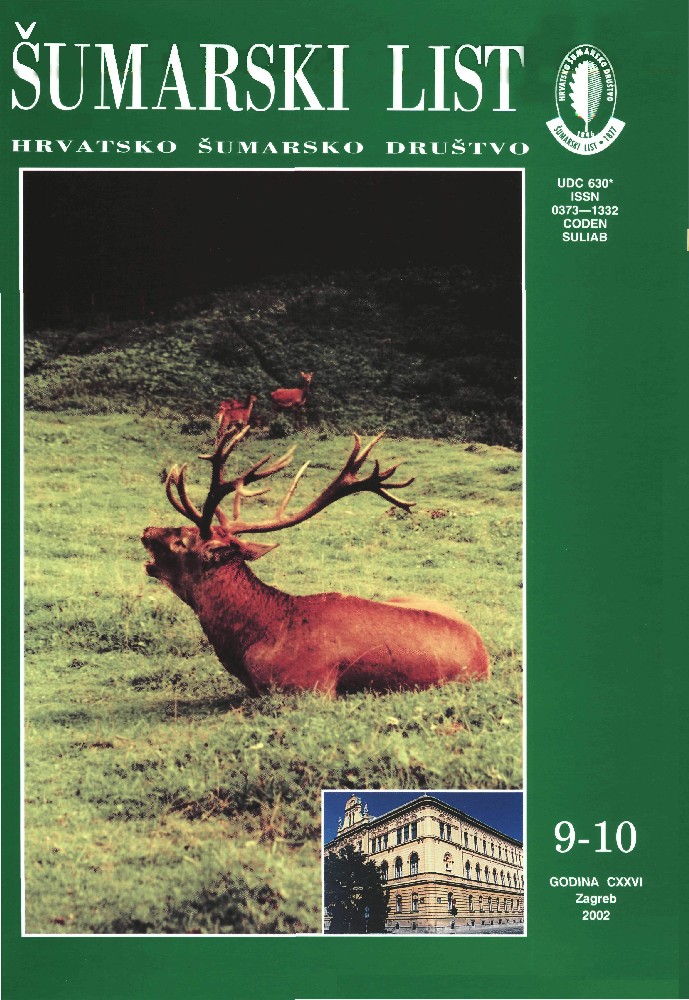| |
| IZVORNI ZNANSTVENI ČLANCI |
| |
|
|
| Vukelić, J., Baričević, D. | UDK 630* 182 + 188 (001) |
| Recent Phytocoenological Perceptions on Beech Forests in Croatia
pdf
HR
EN
|
439 |
| Čarni, A., Franjić, J., Škvorc, Ž. | UDK 630* 182+ 188(001) |
| The Bush Vegetation of the Forest Margins in Slavonia
pdf
HR
EN
|
459 |
| Franjić, J., Škvorc, Ž., Pandža, M., Kekelić, B. | UDK 630* 188(001) |
| Forest Vegetation of the Oštrica Peninsula (Dalmatia, Croatia)
pdf
HR
EN
|
469 |
| Bezak, K. | UDK 630* 525 (001) |
| The Models of Pedunculate Oak (Quercus robur L.) Stands and the Monetary Value of Wood Assortment Production
pdf
HR
EN
|
479 |
| |
| PRETHODNO PRIOPĆENJE |
| |
|
|
| Kremer, D. | UDK 630* 181.8 + 270 |
| The Phenology of Summer Flowering of Some Woody Plants in the Botanical Gardens of the Faculty of Natural Sciences and Mathematics
pdf
HR
EN
|
489 |
Summary: Phenology of flowering of late spring and summer flowering species was analyzed in the Botanical garden of the Faculty of Natural Sciences and Mathematics University of Zagreb on some species of genus Callicarpa, Campsis, Catalpa, Ceanothus, Clerodendrum, Hibiscus, Indigofera, Koelreuteria, Lespedeza, Punica and Sophora. The time of the beginning, culmination and ending of flowering was recorded during the spring and summer of 1998, 1999 and 2000. We were found out that for some species (Clerodendrum trichotomum, Hibiscus syriacus, Punica granatum, Sophora japonica) we can predict the time of the beginning of flowering, because there was no more significant shift in the time of flowering during three years. For less number of species (Catalpa bignonioides and C. ovata, Koelreuteria paniculata, Lespedeza bicolor) it was found out some bigger shift (about three weeks) in the time of the beginning of flowering among the single years. In the others species (Callicarpa spp., Campsis radicans, Ceanothus spp., Indigofera spp.) it was noticed that the moving as regards the time of flowering was one to two weeks. All species show the most stability according to the time of ending of flowering, according to the time of culmination stability is less, while the time of the beginning of flowering is the most variable.
Key words: Callicarpa; Campsis; Catalpa; Ceanothus; Clerodendrum; Hibiscus; Indigofera; Koelreuteria; Lespedeza; Phenology; Punica; Sophora; time of flowering |
| |
| PREGLEDNI ČLANCI |
| |
|
|
| Martinić, I. | UDK 630* 907.1 |
| Management Plans of National Parks and Nature Parks of the Republic of Croatia
pdf
HR
EN
|
501 |
| Šporčić, M. | UDK 630* 945.1 |
| Some Indicators of Internet Forestry Information
pdf
HR
EN
|
511 |



